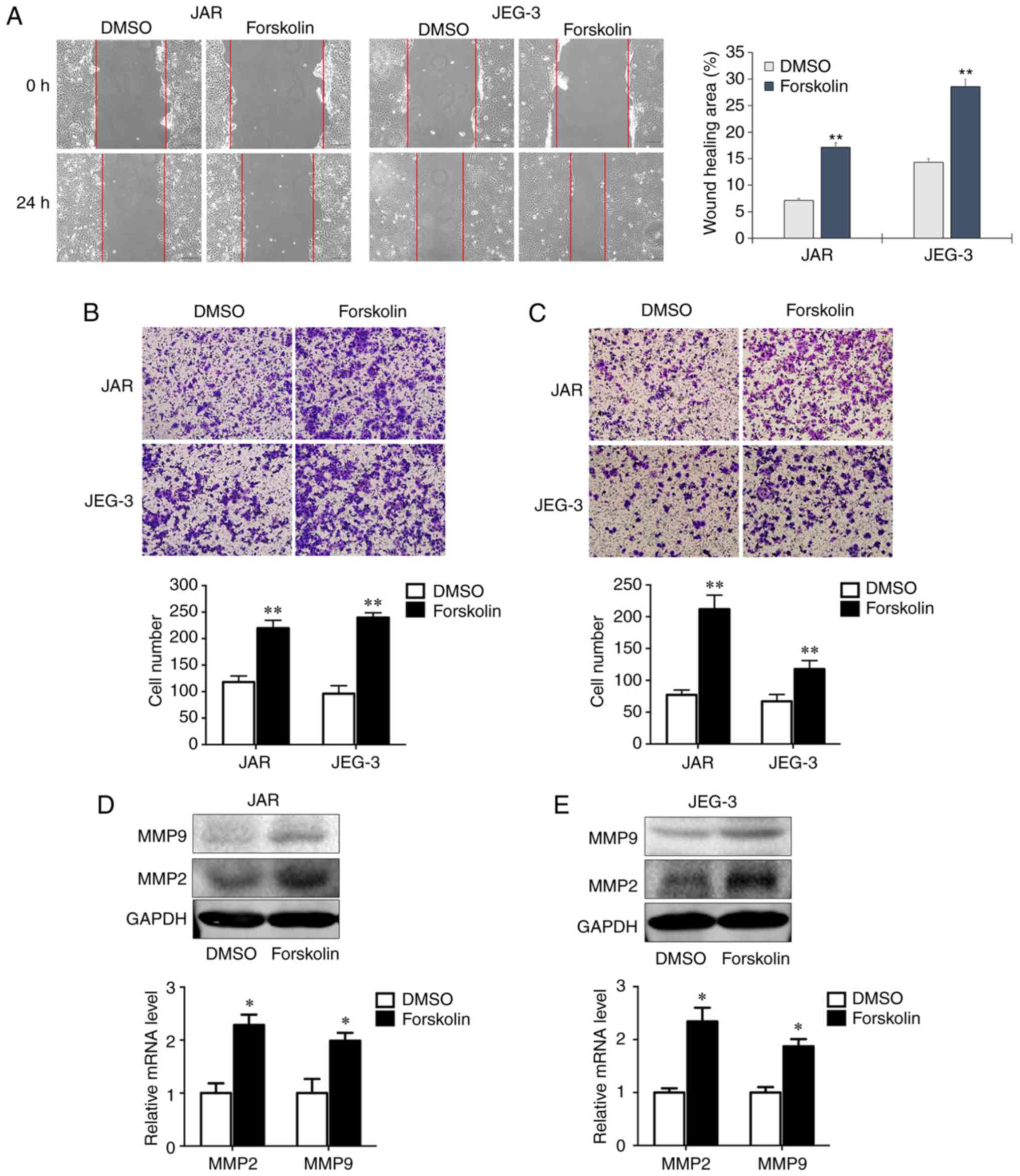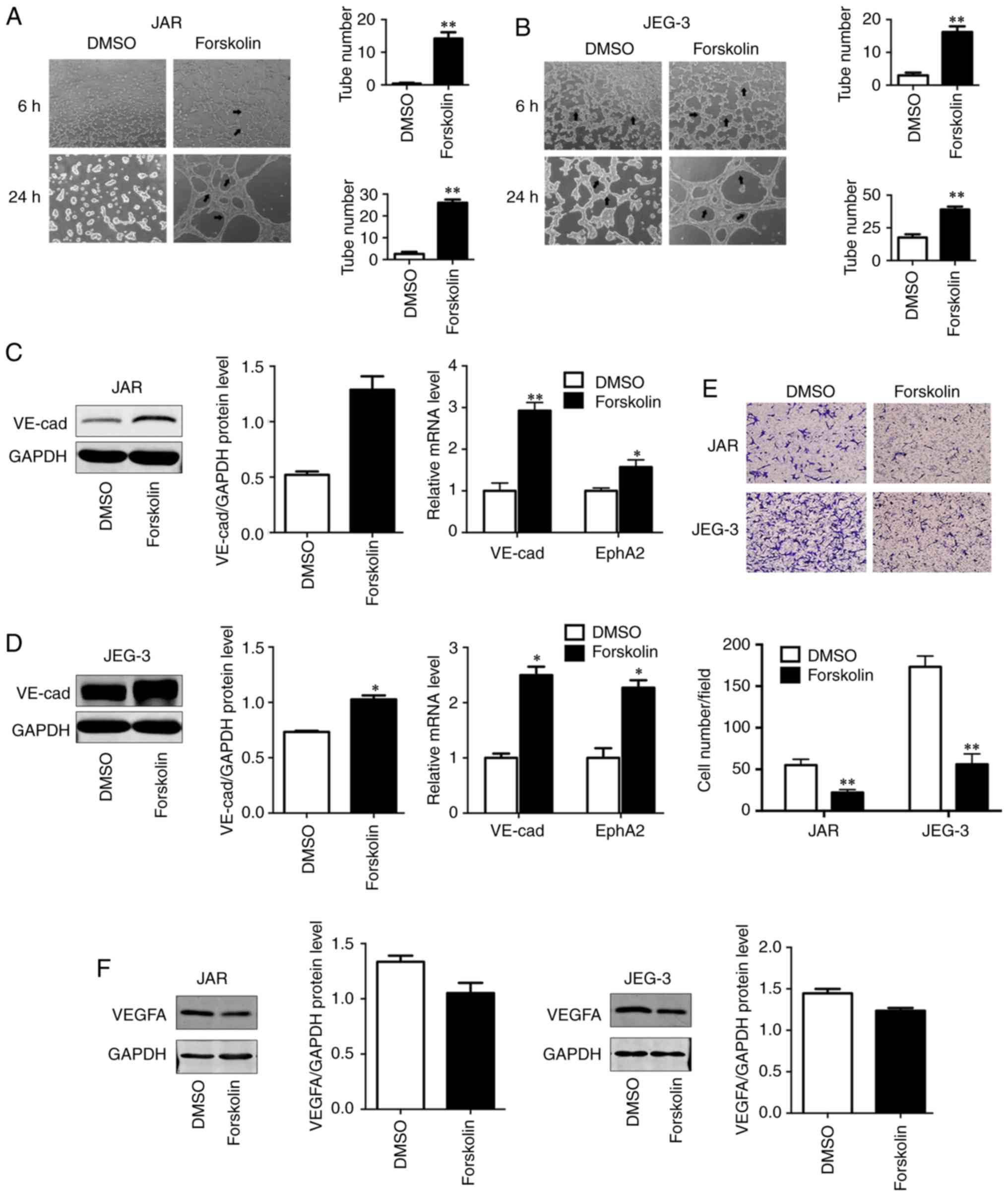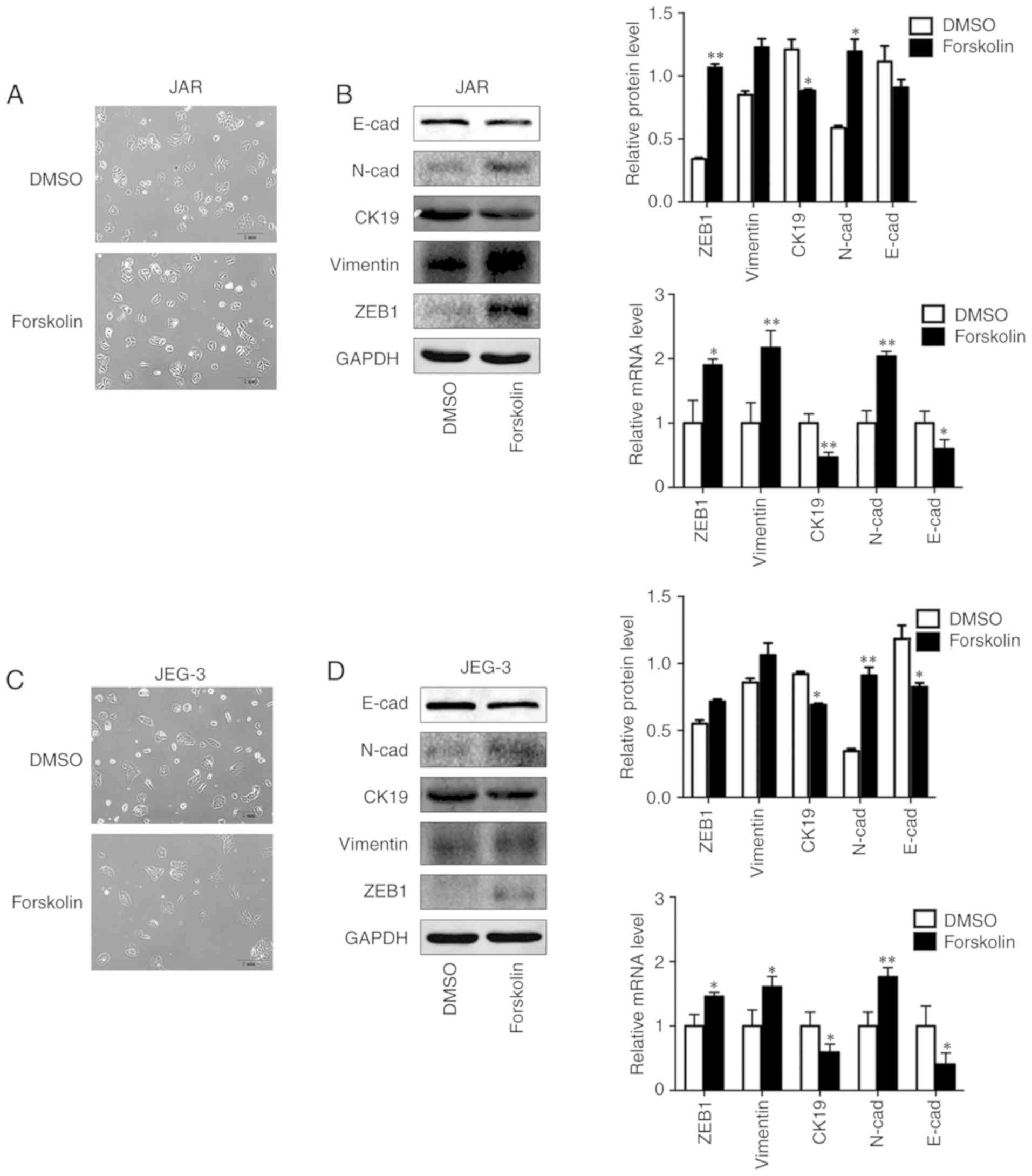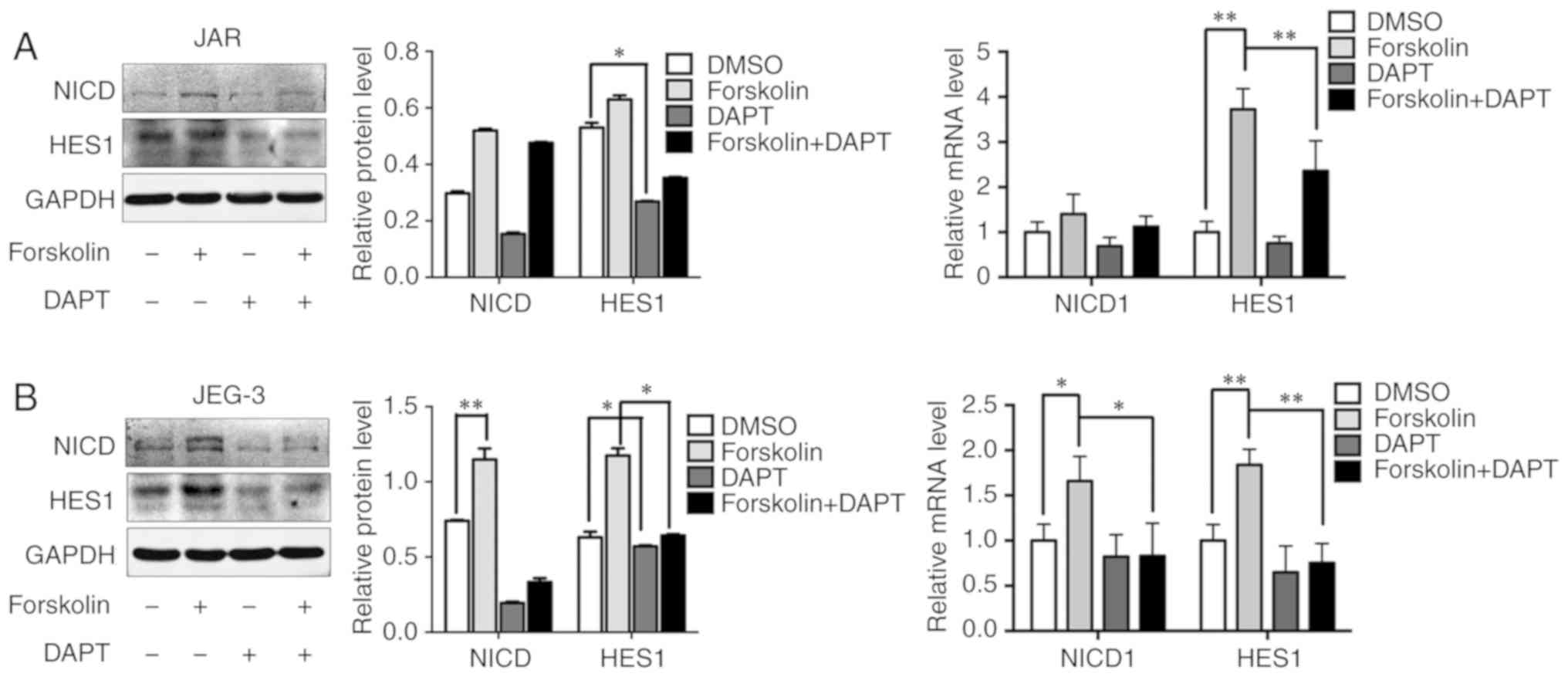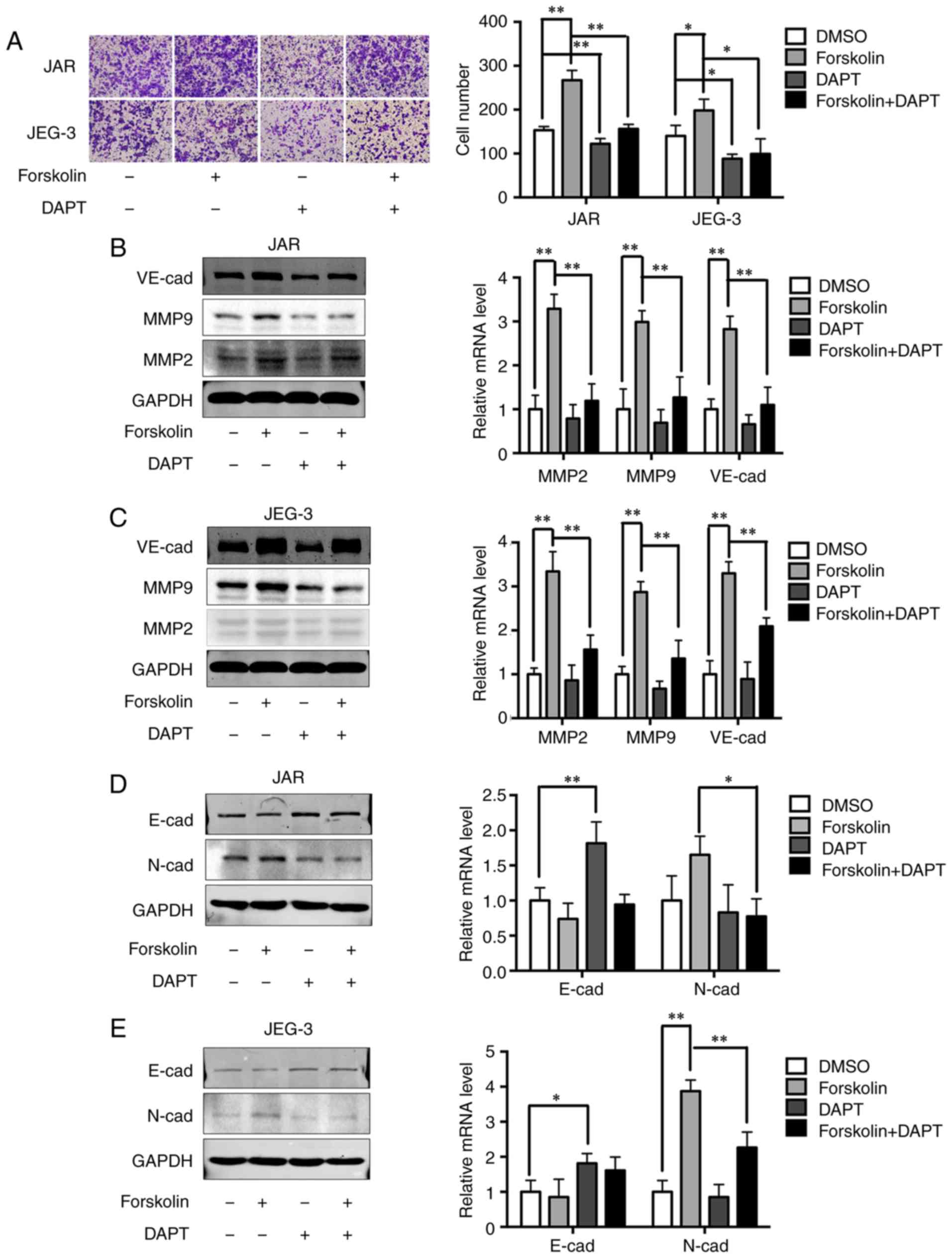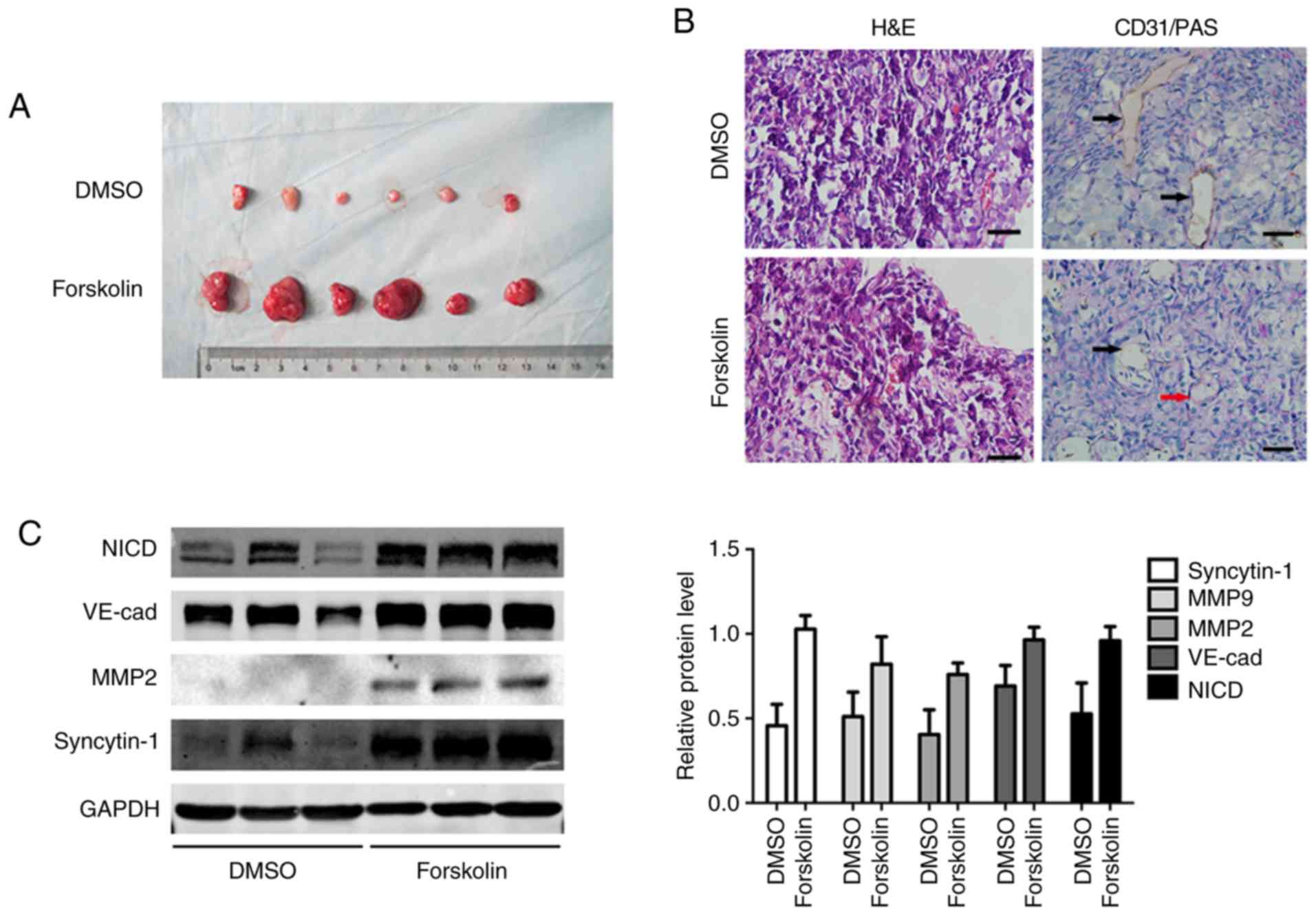|
1
|
Stevens FT, Katzorke N, Tempfer C, Kreimer
U, Bizjak GI, Fleisch MC and Fehm TN: Gestational trophoblastic
disorders: An update in 2015. Geburtshilfe Frauenheilkd.
75:1043–1050. 2015. View Article : Google Scholar : PubMed/NCBI
|
|
2
|
Abu-Rustum NR, Yashar CM, Bean S, Bradley
K, Campos SM, Chon HS, Chu C, Cohn D, Crispens MA, Damast S, et al:
Gestational trophoblastic neoplasia, version 2.2019, NCCN clinical
practice guidelines in oncology. J Natl Compr Canc Netw.
17:1374–1391. 2019. View Article : Google Scholar : PubMed/NCBI
|
|
3
|
Alazzam M, Tidy J, Osborne R, Coleman R,
Hancock BW and Lawrie TA: Chemotherapy for resistant or recurrent
gestational trophoblastic neoplasia. Cochrane Database Syst Rev.
13:CD0088912012.
|
|
4
|
Viallard C and Larrivee B: Tumor
angiogenesis and vascular normalization: Alternative therapeutic
targets. Angiogenesis. 20:409–426. 2017. View Article : Google Scholar : PubMed/NCBI
|
|
5
|
Maniotis AJ, Folberg R, Hess A, Seftor EA,
Gardner LM, Pe'er J, Trent JM, Meltzer PS and Hendrix MJ: Vascular
channel formation by human melanoma cells in vivo and in vitro:
Vasculogenic mimicry. Am J Pathol. 155:739–752. 1999. View Article : Google Scholar : PubMed/NCBI
|
|
6
|
Zhao N, Sun H, Sun B, Zhu D, Zhao X, Wang
Y, Gu Q, Dong X, Liu F, Zhang Y and Li X: miR-27a-3p suppresses
tumor metastasis and VM by down-regulating VE-cadherin expression
and inhibiting EMT: An essential role for Twist-1 in HCC. Sci Rep.
6:230912016. View Article : Google Scholar : PubMed/NCBI
|
|
7
|
Zhang D, Sun B, Zhao X, Ma Y, Ji R, Gu Q,
Dong X, Li J, Liu F, Jia X, et al: Twist1 expression induced by
sunitinib accelerates tumor cell vasculogenic mimicry by increasing
the population of CD133+ cells in triple-negative breast cancer.
Mol Cancer. 13:2072014. View Article : Google Scholar : PubMed/NCBI
|
|
8
|
Su M, Fan C, Gao S, Shen A, Wang X and
Zhang Y: An HCG-rich microenvironment contributes to ovarian cancer
cell differentiation into endothelioid cells in a three-dimensional
culture system. Oncol Rep. 34:2395–2402. 2015. View Article : Google Scholar : PubMed/NCBI
|
|
9
|
Zhang J, Qiao L, Liang N, Xie J, Luo H,
Deng G and Zhang J: Vasculogenic mimicry and tumor metastasis. J
BUON. 21:533–541. 2016.PubMed/NCBI
|
|
10
|
Qiao L, Liang N, Zhang J, Xie J, Liu F, Xu
D, Yu X and Tian Y: Advanced research on vasculogenic mimicry in
cancer. J Cell Mol Med. 19:315–326. 2015. View Article : Google Scholar : PubMed/NCBI
|
|
11
|
Okae H, Toh H, Sato T, Hiura H, Takahashi
S, Shirane K, Kabayama Y, Suyama M, Sasaki H and Arima T:
Derivation of human trophoblast stem cells. Cell Stem Cell.
22:50–63. 2018. View Article : Google Scholar
|
|
12
|
Hendrix MJ, Seftor EA, Hess AR and Seftor
RE: Vasculogenic mimicry and tumour-cell plasticity: Lessons from
melanoma. Nat Rev Cancer. 3:411–421. 2003. View Article : Google Scholar : PubMed/NCBI
|
|
13
|
Red-Horse K, Zhou Y, Genhacev O,
Prakobphol A, Foulk R, McMaster M and Fisher SJ: Trophoblast
differentiation during embryo implantation and formation of the
maternal-fetal interface. J Clin Invest. 114:744–754. 2004.
View Article : Google Scholar : PubMed/NCBI
|
|
14
|
Shih IeM: Trophoblastic vasculogenic
mimicry in gestational choriocarcinoma. Mod Pathol. 24:646–652.
2011. View Article : Google Scholar : PubMed/NCBI
|
|
15
|
Keryer G, Alsat E, Tasken K and
Evain-Brion D: Cyclic AMP-dependent protein kinases and human
trophoblast cell differentiation in vitro. J Cell Sci.
111:995–1004. 1998.PubMed/NCBI
|
|
16
|
Yurugi-Kobayashi T, Itoh H, Schroeder T,
Nakano A, Narazaki G, Kita F, Yanagi K, Hiraoka-Kanie M, Inoue E,
Ara T, et al: Adrenomedullin/cyclic AMP pathway induces Notch
activation and differentiation of arterial endothelial cells from
vascular progenitors. Arterioscler Thromb Vasc Biol. 26:1977–1984.
2006. View Article : Google Scholar : PubMed/NCBI
|
|
17
|
Yamamoto T, Matsumoto K, Kurachi H,
Okamoto Y, Nishio Y, Sakata M, Tasaka K and Murata Y: Progesterone
inhibits transcriptional activation of human chorionic
gonadotropin-alpha gene through protein kinase A pathway in
trophoblast cells. Mol Cell Endocrinol. 182:215–224. 2001.
View Article : Google Scholar : PubMed/NCBI
|
|
18
|
Belkacemi L, Beall MH, Magee TR,
Pourtemour M and Ross MG: AQP1 gene expression is upregulated by
arginine vasopressin and cyclic AMP agonists in trophoblast cells.
Life Sci. 82:1272–1280. 2008. View Article : Google Scholar : PubMed/NCBI
|
|
19
|
Staun-Ram E, Goldman S and Shalev E: Ets-2
and p53 mediate cAMP-induced MMP-2 expression, activity and
trophoblast invasion. Reprod Biol Endocrinol. 7:1352009. View Article : Google Scholar : PubMed/NCBI
|
|
20
|
Lee JM, Dedhar S, Kalluri R and Thompson
EW: The epithelial-mesenchymal transition: New insights in
signaling, development, and disease. J Cell Biol. 172:973–981.
2006. View Article : Google Scholar : PubMed/NCBI
|
|
21
|
Kalluri R and Weinberg RA: The basics of
epithelial-mesen-chymal transition. J Clin Invest. 119:1420–1428.
2009. View
Article : Google Scholar : PubMed/NCBI
|
|
22
|
Sun T, Zhao N, Zhao XL, Gu Q, Zhang SW,
Chen N, Wang XH, Du J, Liu YX and Sun BC: Expression and functional
significance of Twist1 in hepatocellular carcinoma: Its role in
vasculogenic mimicry. Hepatology. 51:545–556. 2010. View Article : Google Scholar
|
|
23
|
Liu Z, Sun B, Qi L, Li H, Gao J and Leng
X: Zinc finger E-box binding homeobox 1 promotes vasculogenic
mimicry in colorectal cancer through induction of
epithelial-to-mesen-chymal transition. Cancer Sci. 103:813–820.
2012. View Article : Google Scholar : PubMed/NCBI
|
|
24
|
Shawber CJ and Kitajewski J: Notch
function in the vasculature: Insights from zebrafish, mouse and
man. Bioessays. 26:225–234. 2004. View Article : Google Scholar : PubMed/NCBI
|
|
25
|
Vartanian A, Gatsina G, Grigorieva I,
Solomko E, Dombrovsky V, Baryshnikov A and Stepanova E: The
involvement of Notch signaling in melanoma vasculogenic mimicry.
Clin Exp Med. 13:201–209. 2013. View Article : Google Scholar
|
|
26
|
Tian Q, Xue Y, Zheng W, Sun R, Ji W, Wang
X and An R: Overexpression of hypoxia-inducible factor 1α induces
migration and invasion through Notch signaling. Int J Oncol.
47:728–738. 2015. View Article : Google Scholar : PubMed/NCBI
|
|
27
|
Tang J, Wang J, Fan L, Li X, Liu N, Luo W,
Wang J and Wang Y and Wang Y: cRGD inhibits vasculogenic mimicry
formation by down-regulating uPA expression and reducing EMT in
ovarian cancer. Oncotarget. 7:24050–24062. 2016.PubMed/NCBI
|
|
28
|
Livak KJ and Schmittgen TD: Analysis of
relative gene expression data using real-time quantitative PCR and
the 2(-Delta Delta C(T)) method. Methods. 25:402–408. 2001.
View Article : Google Scholar
|
|
29
|
Grummer R, Donner A and Winterhager E:
Characteristic growth of human choriocarcinoma xenografts in nude
mice. Placenta. 20:547–553. 1999. View Article : Google Scholar : PubMed/NCBI
|
|
30
|
Follin-Arbelet V, Hofgaard PO, Hauglin H,
Naderi S, Sundan A, Blomhoff R, Bogen B and Blomhoff HK: Cyclic AMP
induces apoptosis in multiple myeloma cells and inhibits tumor
development in a mouse myeloma model. BMC Cancer. 11:3012011.
View Article : Google Scholar : PubMed/NCBI
|
|
31
|
Hess AR, Seftor EA, Gruman LM, Kinch MS,
Seftor RE and Hendrix MJ: VE-cadherin regulates EphA2 in aggressive
melanoma cells through a novel signaling pathway: Implications for
vasculogenic mimicry. Cancer Biol Ther. 5:228–233. 2006. View Article : Google Scholar : PubMed/NCBI
|
|
32
|
Paulis YW, Soetekouw PM, Verheul HM,
Tjan-Heijnen VC and Griffioen AW: Signalling pathways in
vasculogenic mimicry. Biochim Biophys Acta. 1806:18–28.
2010.PubMed/NCBI
|
|
33
|
Cross JC, Hemberger M, Lu Y, Nozaki T,
Whiteley K, Masutani M and Adamson SL: Trophoblast functions,
angiogenesis and remodeling of the maternal vasculature in the
placenta. Mol Cell Endocrinol. 187:207–212. 2002. View Article : Google Scholar : PubMed/NCBI
|
|
34
|
Kojima T, Katsumi A, Yamazaki T, Muramatsu
T, Nagasaka T, Ohsumi K and Saito H: Human ryudocan from
endothelium-like cells binds basic fibroblast growth factor,
midkine, and tissue factor pathway inhibitor. J Biol Chem.
271:5914–5920. 1996. View Article : Google Scholar : PubMed/NCBI
|
|
35
|
Beese M, Wyss K, Haubitz M and Kirsch T:
Effect of cAMP deri-vates on assembly and maintenance of tight
junctions in human umbilical vein endothelial cells. BMC Cell Biol.
11:682010. View Article : Google Scholar
|
|
36
|
Staun-Ram E and Shalev E: Human
trophoblast function during the implantation process. Reprod Biol
Endocrinol. 3:562005. View Article : Google Scholar : PubMed/NCBI
|
|
37
|
Langbein M, Strick R, Strissel PL, Vogt N,
Parsch H, Beckmann MW and Schild RL: Impaired cytotrophoblast
cell-cell fusion is associated with reduced Syncytin and increased
apoptosis in patients with placental dysfunction. Mol Reprod Dev.
75:175–183. 2008. View Article : Google Scholar
|
|
38
|
Boize PA, Patrier S, Cheynet V, Oriol G,
Massardier J, Hajri T, Guillotte M, Bossus M, Sanlaville D, Golfier
F and Mallet F: Expression patterns of ERVWE1/Syncytin-1 and other
placentally expressed human endogenous retroviruses along the
malignant transformation process of hydatidiform moles. Placenta.
39:116–124. 2016. View Article : Google Scholar
|
|
39
|
Staun-Ram E, Goldman S, Gabarin D and
Shalev E: Expression and importance of matrix metalloproteinase 2
and 9 (MMP-2 and -9) in human trophoblast invasion. Reprod Biol
Endocrinol. 2:592004. View Article : Google Scholar : PubMed/NCBI
|
|
40
|
Cohen M, Ribaux P, Epiney M and Irion O:
Expression of metal-loproteinases 1, 2, 7, 9, and 12 in human
cytotrophoblastic cells from normal and preeclamptic placentas.
Neuro Endocrinol Lett. 33:406–411. 2012.
|
|
41
|
Bischof P, Martelli M, Campana A, Itoh Y,
Ogata Y and Nagase H: Importance of matrix metalloproteinases in
human trophoblast invasion. Early Pregnancy. 1:263–269.
1995.PubMed/NCBI
|
|
42
|
Kessenbrock K, Plaks V and Werb Z: Matrix
metalloproteinases: Regulators of the tumor microenvironment. Cell.
141:52–67. 2010. View Article : Google Scholar : PubMed/NCBI
|
|
43
|
Li L and Li W: Epithelial-mesenchymal
transition in human cancer: Comprehensive reprogramming of
metabolism, epigenetics, and differentiation. Pharmacol Ther.
150:33–46. 2015. View Article : Google Scholar : PubMed/NCBI
|
|
44
|
Fan YL, Zheng M, Tang YL and Liang XH: A
new perspective of vasculogenic mimicry: EMT and cancer stem cells
(Review). Oncol Lett. 6:1174–1180. 2013. View Article : Google Scholar : PubMed/NCBI
|
|
45
|
Cuman C, Menkhorst E, Winship A, Van
Sinderen M, Osianlis T, Rombauts LJ and Dimitriadis E:
Fetal-maternal communication: The role of Notch signalling in
embryo implantation. Reproduction. 147:R75–R86. 2014. View Article : Google Scholar
|
|
46
|
Haider S, Pollheimer J and Knofler M:
Notch signaling in placental development and gestational disease.
Placenta. 56:65–72. 2017. View Article : Google Scholar : PubMed/NCBI
|
|
47
|
Huppert SS, Le A, Schroeter EH, Mumm JS,
Saxena MT, Milner LA and Kopan R: Embryonic lethality in mice
homozygous for a processing-deficient allele of Notch1. Nature.
405:966–970. 2000. View Article : Google Scholar : PubMed/NCBI
|
|
48
|
Jasinska A, Strakova Z, Szmidt M and
Fazleabas AT: Human chorionic gonadotropin and decidualization in
vitro inhibits cytochalasin-D-induced apoptosis in cultured
endometrial stromal fibroblasts. Endocrinology. 147:4112–4121.
2006. View Article : Google Scholar : PubMed/NCBI
|
















